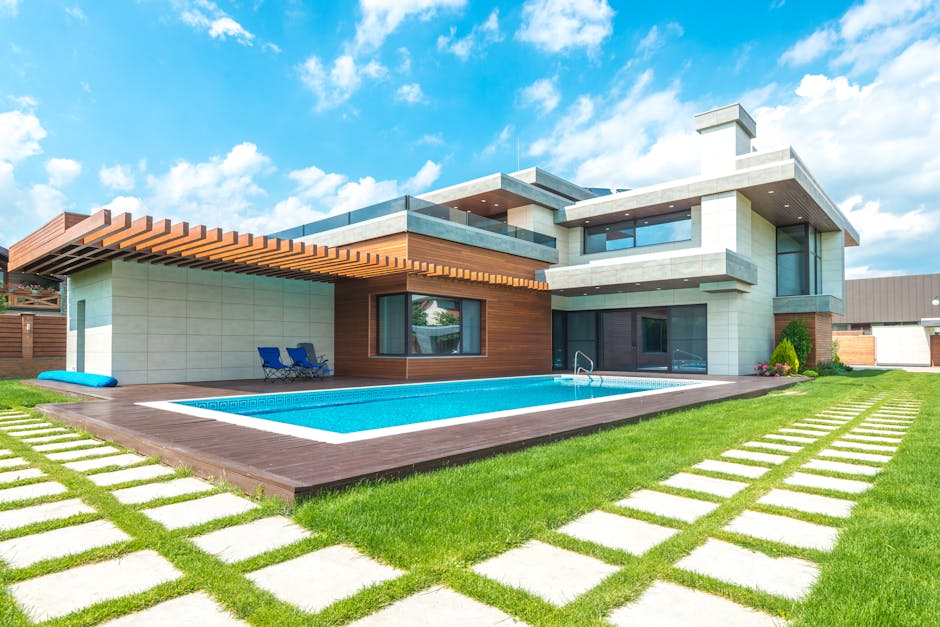Why All-Weather Matters
Outdoor living isn’t just a warm-weather trend anymore—it’s a long-term shift in how people want to use their space. Patios have gone from seasonal perks to full-time extensions of the home. Whether it’s weekday dinners on the deck or winter coffee under a covered pergola, people are looking for ways to use their outdoor spaces 12 months a year.
Thoughtful design plays a big part. A well-planned all-weather patio doesn’t just make life easier—it adds real value to a property. It boosts curb appeal, increases livable square footage, and offers daily comfort without creating more upkeep. Done right, these spaces require less maintenance than traditional yards and can be used more often, in more ways. Rain or shine, heat or cold—it’s about designing smart now to enjoy more later.
Step 1: Start with Smart Weatherproofing
A good all-weather patio starts at ground level. Composite decking is a smart go-to: it doesn’t warp, splinter, or fade like wood, and it handles both heat and moisture without drama. Weather-resistant pavers give you a cleaner, more modern finish and survive freeze-thaw cycles better than traditional stone. Sealed concrete remains a low-maintenance option that handles heavy foot traffic and foul weather alike. It’s not flashy, but it holds up.
Overhead, coverage matters. Pergolas with retractable canopies let you control shade and airflow on the fly—great for unpredictable weather. For more insulation and noise control, solid patio covers or fixed awnings do the job. They also help protect your furniture and flooring underneath, extending your investment.
Drainage is where a lot of people get sloppy. Poor planning means standing water and slick surfaces—fast tracks to damage and injury. Build with a slight slope away from your home, and consider gravel channels or a proper underground drainage system. Quick tip: use non-slip coatings especially in high-traffic zones.
Weatherproofing isn’t glamorous, but it’s what makes the rest of your patio work—rain, shine, or snow.
Step 2: Temperature Control
One of the most critical aspects of building an all-weather patio is ensuring year-round comfort. Temperature control allows you to enjoy your outdoor space whether it’s chilly in the winter or blazing hot in the summer. Here’s how to stay prepared for both extremes:
Keeping Warm When Temperatures Drop
Don’t let cooler months keep you inside. These heating options can extend your patio season well into fall and beyond:
– Integrated outdoor heaters: Mounted overhead or built into structures, these provide consistent warmth without being intrusive.
– Fire pits: Whether gas or wood-burning, fire pits offer both style and function—perfect for evening gatherings.
– Fireplace walls: A stunning focal point that provides significant heat and architectural interest year-round.
Staying Cool in the Heat
Warm weather shouldn’t be a barrier to relaxation. With these cooling solutions, your patio can remain a haven even during the hottest months:
– Ceiling fans: Ideal for covered patios, ceiling fans circulate air and provide an instant breeze.
– Misting systems: A fine mist cools the air noticeably—great for dry climates.
– Natural ventilation: Design your patio to allow for cross-breezes using open layouts and strategic spacing.
Bonus Layer: Landscaping for Comfort
Beyond mechanical solutions, smart landscaping can provide natural climate control:
– Shade trees: Planted in the right spots, they block direct sun and offer a cooling canopy.
– Tall hedges or trellises: These add beauty while shielding the space from wind.
– Vertical gardens: Living walls can help cool the area and improve air quality.
A balanced mix of heating, cooling, and natural elements makes your patio a functional escape in any season.
Step 3: Furniture That Lasts
When it comes to patio furniture, don’t overthink it—just get the good stuff. Aluminum is lightweight, rustproof, and handles year-round exposure like a champ. Teak costs more, but it’s hard as nails and ages with dignity. And weather-treated wicker gives you that cozy, classic look without falling apart in six months.
Cushions are where most people get it wrong. Skip the bargain bin foam and go for quick-dry, mold-resistant options with UV-stable fabrics like solution-dyed acrylic. Keep the color, lose the mildew. Pro tip: store cushions in a weather-sealed deck box or under cover when not in use. Bonus points for removable, machine-washable covers.
If your space is tight, go multi-use. A storage bench doubles as extra seating. A collapsible dining table can flex between mealtime and workspace. Nesting tables? Always a win. Treat furniture like it lives outdoors full-time—because it does.
Step 4: Lighting for All Seasons
Lighting isn’t just functional—it shapes how your patio feels after sundown. A solid setup balances three layers: ambient, task, and accent. Ambient lighting gives general illumination—think overhead string lights, wall sconces, or flush-mount LEDs. Task lighting helps with specifics like cooking or reading, so add focused options like gooseneck fixtures by the grill or under-counter LEDs near prep areas. Accent lighting sets the mood and highlights design: use uplights on trees, lanterns on the table, or hidden LEDs under seating benches.
Now, solar vs. hardwired. Solar is easy and cheap. It works for less-used areas or accent spots. But come winter or cloudy stretches, performance can drop. Hardwired lighting brings reliability and brightness but adds installation cost. A hybrid approach gives you the best of both: solar where you can, hardwired where you must.
In the darker seasons, the trick is layering light and using warm-temperature bulbs (2700K to 3000K) to avoid a sterile, cold feel. Position lighting to minimize shadow pockets, especially along paths and seating zones. And don’t overlook smart timers or motion sensors—they save energy and boost safety when daylight checks out by five.
Step 5: All-Season Décor and Functionality
Creating a truly year-round patio means using materials and layouts that won’t fold under pressure from the elements. Start with your basics—outdoor rugs and planters. Look for fade-resistant, quick-dry fabrics and heavy-duty bases that won’t tip or crack in wind or rain. Resin, concrete, and metal finishes tend to outlast the trendy but flimsy stuff. As for decor, think function with form: lanterns that house LED lights, waterproof cushions stored in benches, planters that double as space dividers.
Off-season gear storage is what separates a well-used patio from one draped in tarps half the year. Install low-profile deck boxes or weatherproof cabinets that blend in with your layout. Pro tip: go vertical with hooks or wall racks for tools and foldable furniture. Keep it organized and close by—you’ll be more likely to use the space.
Smart zoning is the real unlock. Even small patios can feel expansive if you break them into clear areas for eating, lounging, and cooking. Use modular furniture, rugs, or planters to define each zone without building walls. Keep walkways clear, and make sure seating and cooking areas aren’t fighting for attention. It’s not about square footage—it’s about making every inch work hard, year-round.
Bonus: Quick DIY Upgrades
You don’t need a jackhammer or a permit to breathe new life into your patio. Start with lighting—it’s one of the fastest wins. String lights, solar stakes, or battery-powered lanterns can instantly change the mood for under $100. Add an outdoor rug to define space without building anything. Look for weather-resistant options that roll out in seconds and handle the elements year-round.
Plants are another no-fail upgrade. Potted greenery, hanging baskets, or vertical wall planters give your patio depth and texture, even in colder months. Go for a mix of evergreens and seasonal color to keep it interesting. Swap in fresh mulch or gravel to clean up faded corners with minimal effort.
Need more function? Stackable stools, side tables, or a rolling bar cart turn dead zones into useful spots. And don’t sleep on textiles: covers, cushions, and throws—made for the outdoors—can upgrade comfort fast and are easy to rotate by season.
The key here is flexibility. These upgrades work no matter the weather or month—and none of them require a sledgehammer.
(See more: DIY Upgrades to Transform Your Backyard Quickly)
Final Thoughts
Too many people build patios like summer’s going to last forever. Then winter shows up, and suddenly the space is just… sitting there. That’s a design fail. The smarter move? Build for all seasons right out of the gate.
Yes, it takes a little more planning upfront. But investing in durable materials, flexible layouts, and a few on-demand climate fixes—like heating, shade, or wind cover—pays off for years. You end up with a patio that actually works 365 days a year, not just during BBQ season.
The key isn’t going big, it’s going smart. Think comfort, not fluff. Design for rain, sun, cold, and heat without needing constant babysitting. That’s how you turn an outdoor space into a true extension of your home—one you’ll actually use.



